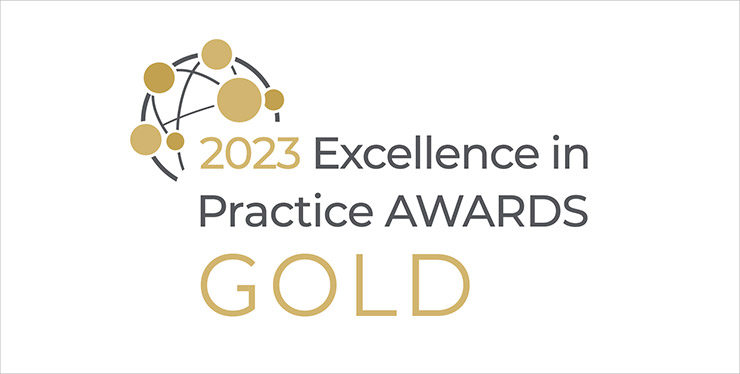At an IMD Discovery Event, Professor Shlomo Ben-Hur and guest contributors shared their research on corporate learning and how to build an effective learning organization based on their work with various companies. Participants took part in research, shared their practices, and walked away with action plans for their own improvement.
Corporate learning is the capacity of an organization to acquire, apply and share knowledge for the purpose of exploring new solutions and exploiting them to improve efficiency and competitive advantage. While “learning” is a label some companies use to refer to their training department, corporate learning embraces a much wider notion as it pertains to a company-wide learning culture in which both the organization and its employees constantly learn and adapt.
According to Peter Drucker, our extraordinary capacity to adapt, learn and apply what we learn has turned out to be a true competitive advantage for mankind over all other species, leading to our current predominance on earth. More recently, studies such as one led by Accenture have found that:
Companies focused on high-performance learning return better revenue and profit growth compared with their competitors and industry peers that are less learning-focused.
However, the learning landscape in many organizations is rather fragmented. Despite organizations’ statements about the importance of learning, practices often lag behind their intentions:
• Hierarchies and central control often inhibit learning through exaggeratedly top-down approaches.
• Many companies place more emphasis on finding scapegoats to blame for failures than on trying to learn from mistakes.
• People continue to hoard important information rather than share it because knowledge is still seen as a source of power.
• Few organizations adopt a targeted approach to learning as required by a multi-generational diverse workforce.
So reality suggests that learning is not yet a business priority for most companies even though research shows that learning and adapting – and doing so fast – are increasingly crucial elements of competitive advantage.
Organizational learning
The cycle that companies engage in while learning and adapting to the market is composed of three fundamental stages:
- Acquiring knowledge by detecting and deciphering even the weakest signals from the market, gathering the critical information needed, and synthesizing the data into useful organizational wisdom.
- Applying knowledge by first ensuring the new knowledge works for the situation and then modifying organizational behaviors to reflect new insights.
- Sharing knowledge to complete the learning cycle and prepare for the next cycle in the learning process. A strong culture of sharing usually results in a greater proliferation of ideas.
In each of these three stages, speed is a key component because a company’s competitive advantage is increasingly about its ability to learn and adapt faster than its competitors.
The success of this cycle heavily depends on the company culture in which it is embedded. Organizations that score highly on key cultural variables demonstrate greater profitability, sales growth and market-to-book ratios than those with lower scores.
The five organizational culture enablers that are associated with learning and help facilitate an effective learning cycle are:
- Diversity, including the appreciation and acceptance of heterogeneity and the ability of an organization to capitalize on these varied views and differences.
- Psychological safety is about a culture that tolerates failure as part of the learning process. It is about asking questions, taking risks and encouraging creative thinking and behavior, as explained by one participant from an international IT company: “We are very open to testing things; if it works, great! If not, we drop it. In a training environment, people really open up about failures. We have no formal mechanism to capture this. We are just very innovative and experimental and like to try things out.”
- Autonomy is an individual or team’s freedom to initiate and explore new ideas. It involves a shift from behavioral control to market-based employee control and may be encouraged through networks and the elimination of organizational boundaries. One participant said, “Autonomy came from a void – we ran out and did what we thought was best.” Another participant noted that “regulation prevents a great deal of autonomy and room for maneuver.”
- Experimentation involves conducting controlled tests or investigations to “fail early in order to succeed sooner.” As one participant from a multinational communications company explained, “In our organization we are allowed to experiment but we also have to deliver results. It’s not about experimenting for its own sake, but to solve problems, so it’s about action-oriented experiments.
- Reward means recognizing teams and individuals that introduce new ideas and launch new processes. A higher reward encourages greater effort and should be more often than not based on non-financial elements. As a participating executive from a manufacturing company mentioned: “Although rewards for learning are not widespread across our company, there are some pockets of excellence across the business and we are training our manufacturing staff to talk about what they have learned and to share that knowledge. They are made to feel proud about their accomplishment without big bonuses.”
Another participant explained, “We don’t have specific formal experimentation mechanisms in place; the closest is awards for doing something unexpected in terms of innovation and taking something to a place that was not expected. But it’s not systematic as this would take away spontaneity.”
Obstacles to organizational learning
While many companies implement the fundamentals mentioned above and try to install some of the enablers at least in some parts of their business, Professor Ben-Hur’s research indicates that these efforts are not enough to create a learning organization and that a whole range of challenges exist in the positioning and the functioning of the learning function itself. Some of these are:
• The learning function may simply be a new label for the old training department, with the learning being linked more to employee skill building and less to organizational performance issues.
• There may be little or no alignment between the learning function’s mission and the corporate strategy.
• The chief learning officer (CLO) may not have the authority to achieve his/her mission either due to being too far from the decision making table or due to being associated with support functions that are not being identified as core parts of the business.
• The remit of the learning function may be restricted to top management with the majority of the organization remaining subject to disjointed efforts of different players.
• A devalued learning function and an absence of brand recognition due to inadequate operational effectiveness as well as an unclear and fragmented structure.
• The dependency of the learning function on the tenure and views of the CEO.
Building a learning organization
An efficient and effective learning organization (LO) must be a strategic partner of the business, and the authority and vision should come from the top.
The learning portfolio must be coherent, clearly structured and aligned with the corporate strategy. The following five building blocks should be taken into account when setting up the LO: strategic positioning, scope, portfolio, design and governance.
- Strategic positioning is mainly concerned with the core purpose, mission and strategic objectives of the LO, all of which should be aligned with the corporate strategy, mission and strategic objectives. The work required to come up with two or three lines of mission statement can take an inordinate amount of time but if done – and done well – it is something that can be used for communication around the company. The whole question of mission statements can be a big challenge; indeed half the participants said their LO does not have one.
- Scope refers to the target audience (e.g. all employees, just top management) and type of interventions on which the LO should focus (e.g. executive development, change management, professional development). The range of activities should be consistent with the LO’s mission. The LO should be properly mandated and everyone should be clear about what is in and out of scope.
- Portfolio refers to the LO’s offerings, which should be structured, coherent and of high quality: Programs need to be categorized and clear; duplications within the LO and with other internal providers are to be avoided; objectives must be met to ensure high quality. The portfolio should also be aligned with the scope and the LO’s strategic positioning, and should take into account a multigenerational workforce since different generations think, behave, learn and work in different ways.
- Design involves the appropriate positioning of the LO within the company’s organization chart, and defining its internal structure, business model and operating model. To do this effectively, the LO should be regarded as a partner in creating competitive advantage.
- Governance refers to the strategic oversight required to ensure continued alignment between the company’s strategy and the LO’s mission, and financial oversight to secure adequate resources and funding.
Conclusion
In today’s world, the corporate learning function needs to play a key role in the strategic positioning of any business and in ensuring its competitive advantage. Key to this is becoming a vital partner of the business, building an effective relationship with HR, constantly reflecting on the learning function’s purpose, and ensuring it evolves with the business – or even ahead of it. Branding, marketing and communication are all elements of a modern corporate learning function.
In times of rapid change, the occasions to shape the corporate learning function are abundant. It is up to learning professionals to grab the opportunity and unleash the potential.



![The future of mega dive, with Professor Cyril Bouquet [Podcast]](https://www.imd.org/ibyimd/wp-content/uploads/2022/11/IMD-ManagementCast-SocialAssets-CyrilBouquet_640x640-Generic-Spotify-Option1-720x630.png)